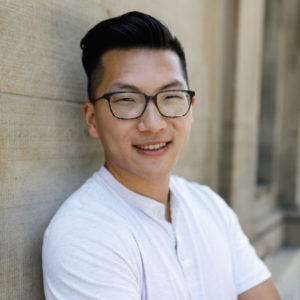For our visit to the mountain resort town of Hakone, we opted to stay at a ryokan named Yama No Chaya in search of an authentic Japanese experience.
Ryokans are Japanese-style inns where you can immerse yourself in traditional Japanese culture, and this would be our first time experiencing this unique accommodation style.
For nearly 50 years, Yama No Chaya has been nestled among the rolling hills of Hakone, only an hour outside of Tokyo. The property is well-known for its onsens (natural spring baths) and cuisine, as well as for attracting visitors who come to see the fall leaves change colours.
In This Post
- Booking
- Location
- Check-in
- Yama No Yube Room
- Dinner
- Hot Springs
- Breakfast
- Other Facilities
- Conclusion
Yama No Chaya – Booking
Our stay was booked through “The Ryokan Collection“, a booking portal that serves several prominent Japanese ryokan facilities.
I initially intended to reserve a room at Hakone Ginyu on the recommendation of a friend. However, it was fully booked on my preferred dates, and Yama No Chaya was among the best available alternatives.
For a ryokan, Yama No Chaya was quite reasonably priced. These types of stays can get rather pricey, so I felt like it would be best to start off modestly for my first ryokan experience. Plus, it looked like a very attractive property from the images.
A one-night stay for two guests, including breakfast and dinner, cost us ¥70,000 ($642 CAD).
Note that ryokans typically set prices based on the number of guests, so if you’re travelling solo, the price will likely be a bit cheaper than booking for two people.
At first glance, this might seem expensive for a one-night stay, but keep in mind that kaiseki-style multi-course breakfast and dinner are factored into the price.
To complete our reservation via The Ryokan Collection, we were asked whether we had any dietary requirements, and then asked to fill out a credit card authorization form. Once that was done, everything was booked and good to go.
Yama No Chaya – Location
You can reach Hakone via the Odakyu Electric Railway from Tokyo’s Shinjuku Station. The journey is about an hour to an hour and a half, depending on which train you take.
The regular and express commuter trains make various stops on the way out to Hakone, and there’s also a “Romancecar” which has forward-facing seats and better views from the windows. This express train can bring you there slightly faster, but is subject to an additional surcharge.
The town of Hakone is in a mountainous area renowned for its onsens and breathtaking views of the volcano and Lake Ashinoko. A number of guest homes are nestled here, including Yama No Chaya.
Hakone-Yumoto station, the local transportation hub, is a quick five-minute cab ride or a 15-minute walk from Yama No Chaya.
It’s worth noting that the hill is rather steep if you’re carrying any bags with you – we opted to store our heavy luggage in the coin lockers at Shinjuku Station and only bring backpacks for this side-trip into the countryside.
The hotel is located reasonably near to Hakone’s well-known sights. A few places within walking distance include the Amidaji Temple and Fukazawa Zeniarai Benten Shrine, both within a 10-minute walk from the property.
However, most attractions worth visiting will require public transport or a taxi. The Hakone Shrine sits below the Mount Hakone volcano, and is a 35-minute ride by bus from Hakone-Yumoto Station.
Lake Ashinoko is another popular destination. It’s a 50-minute journey from Tonosawa Station, which is just an eight-minute walk from Yama No Chaya.
Yama No Chaya – Check-in
We arrived at 4pm and crossed over a stream via a wooden bridge to arrive at the resort.


As we made our way across, we were warmly welcomed by an attendant. On the other side was a single building nestled amid a bamboo forest, almost camouflaged into its surroundings.
The atmosphere immediately invokes a sense of relaxation and comfort as you enter this traditional Japanese ryokan.


We were escorted to the front of the building, and then guided into a peaceful wooden structure adorned with Japanese tatami mats. These mats are commonly used as flooring in traditional Japanese-style rooms.
In the lobby, we met the staff associate who took care of us for the duration of our stay.

She then led us to our room while outlining the specifics of the property, such as dinner and breakfast schedules, bath schedules, and how everything in our room operated.



Something I didn’t anticipate when staying at a ryokan was how tightly everything was scheduled.
Times being set in advance for the meals made sense, of course, as the food would need to be prepared; however, even the bath times would be carefully scheduled throughout our stay.
There are four different communal baths here at Yama No Chaya, which are separated by gender. Throughout the day, the baths are cleaned and rotated so that all guests can experience each of the baths at least once during their stay.
Furthermore, every set of guests had the opportunity to reserve one of the baths for private use for a one-hour period. Since we were only staying for one night, we were asked to lock in our bath booking as soon as we arrived to ensure we had a chance to experience the private bath.
We sat down in our room with the attendant and finished the check-in process, eager to delve into the ryokan experience in its entirety.
Yama No Chaya – Yama No Yube Room
There are just 15 rooms here at the Yama No Chaya, each with a unique interior arrangement and design influenced by Japanese teahouses.
We had booked the Yama No Yube room, which is a Japanese-style set of living quarters featuring a tsukimidai terrace (moon-viewing deck) and an open-air bath with water from the local ancient hot spring.

The Yama No Yube Room has a rustic atmosphere, with charming traditional Japanese layouts and motifs. The room features tatami mats all over.
In the centre of the room is a short-legged table with floor cushions for guests to sit on when meals are served. Warm towels and tea were proactively set on the table upon arrival.



After dinner, the staff perform turndown service by pushing the central table down into the space along the bottom, and then a futon is placed on the ground with soft down comforters.
The sleeping arrangement wasn’t entirely clear from the images we’d seen when booking, and I was somewhat surprised that we’d be sleeping on the ground – but it was very much something to be embraced here in these traditional lodgings.


The room was definitely on the minimalist side. Only some Japanese artwork was displayed on the wall adjacent to the TV, and then a few flowers were dotted around.


The room has an air conditioner in the corner, and then there’s a well-stocked pantry with a minibar, as well as a coffee and tea station.


At the end of the room is a covered terrace with two lounge chairs facing out for relaxing. The massive windows of the terrace open up to the moon-viewing platform, with views of the greenery and mountains in the distance.


It’s worth noting that Hakone appears to be inhabited by fairly enormous spiders, and they’re quite prevalent even when strolling down the main streets of the village.
Yama No Chaya is no exception, and there was quite a big fellow who had made our balcony its home – although you gradually acclimate to them over time.
Down a short corridor in the room is the bathroom. It’s quite modest in size, but has a lovely design with a beautiful brass faucet and a vessel sink.


There’s a solid range of skincare products provided. Moreover, an unexpected modern inclusion at this otherwise traditional ryokan was a Dyson hair dryer.


The toilet chamber is located at the far end of the corridor.

Note that there is no “proper” shower in the bathroom; rather, the shower facilities share a space with the private open-air onsen.
This creates a Japanese-style wet room, where when you enter the bath, water pours out onto the floor all around you before draining away.
In this arrangement, the shower simply takes the form of a small bench for you to sit down on while you wash yourself using a handheld shower head.

The semi-open layout of this wet room allows for the cool mountain breeze to blow comfortably into the area, making for a very tranquil bathing experience.
Additionally, a set of two yukatas and two heavier outdoor vests were provided for your comfort during your time at the resort.

Overall, the Yama No Yube Room was interesting and distinctive, certainly different from any other hotel we’d stayed at before.
After settling into the room and sipping on some warm tea, we were looking forward to the rest of the ryokan experience, starting with our dinner scheduled for 6pm.
Yama No Chaya Ryokan – Dinner
Dinner at Yama No Chaya would served kaiseki-style, with a total of 10 different courses.

Our table was set in a lovely manner, with a glass jug of water available for hydrating throughout the meal.

To start dinner off, we were presented with a few appetizers. Scallops were done in a dashi broth topped with radish and scallions, followed by Japanese yam tofu accompanied by a ponzu sauce.



Both appetizers made for a palatable beginning to the meal, with light tastes and interesting textures. In particular, the Japanese yam tofu was surprisingly creamy, serving as an intriguing vehicle for the piercing ponzu flavour.
Next up was the mochi rice cake, accompanied by miso soup and seaweed. The miso-topped mochi was barbecued over a charcoal grill in front of us, burnt to almost a crisp on the outside, but still soft on the inside.

We then wrapped the mochi inside the seaweed and took a big bite. This was a very innovative way to eat mochi, and the miso sauce added a considerable amount of umami flavour.

A savoury broth followed this dish, alongside eel and mushrooms topped with yuzu.

I was impressed by the inventiveness of many of the dishes being served, and I observed many new methods of preparation, cooking, and eating that I hadn’t experienced before.
The fifth course was fish sashimi, accompanied by seaweed and soy sauce. This was then accompanied by Spanish mackerel with burnt skin served with ponzu jelly and red radish.


The sashimi was tasty and melted pleasantly in my mouth. Meanwhile, the Spanish mackerel blended nicely with the tangy flavour of the ponzu jelly, and was among my favourite courses of the evening.
The following course was the “Atohassun” main event, beautifully presented with a wide range of offerings on show. There was everything from boiled vegetables to local chicken, sushi, and pickled barracuda.

Some items certainly pushed our boundaries a bit in terms of taste. Although I love Japanese food, I wasn’t blown away by every dish: some were outstanding, while others were only OK.
Nonetheless, as an authentic Japanese kaiseki dinner, it’s only natural that there would be new flavours that I hadn’t yet experienced and may not be fully to my taste.
The impressive “Atohassun” spread was followed by a few main courses: pathogen-free pork confit, and then marinated blue fish.
The pork wasn’t a favourite of mine. It seemed to have some Western fusion elements, with the addition of lemon juice, tomato, and chilli flavours, which I didn’t think worked very well.

The bluefish was my preferred protein out of the two, tender and delicate with just enough umami to it.

The last course before moving on to dessert was a choice between koshihikari rice and homemade soba noodles. My partner Jessy picked the rice, whereas I enthusiastically opted for the noodles, dipping them in a light soy sauce before slurping them down.

To wrap up the meal, we were presented with a dessert course of fruit jelly with custard pudding, as well as warabi mochi and bracken dumpling.


We didn’t actually know what bracken was and had to Google it – it’s a fern-like plant, and the fact that it was made into a sweet and delicious dessert dumpling here speaks to the creativity of the kitchen here at Yama No Chaya.
Yama No Chaya Ryokan – Hot Springs
Dipping into the onsens is a major part of staying at a ryokan. The water here comes from the natural hot springs of Tonosawa, with its temperature adjusted to a tolerable level and then released into the baths.
Here at Yama No Chaya, there are four different communal baths sprinkled throughout the property. Each bath has a changing room that you must go through prior to entering the actual bathing area.
All the baths are essentially a large pool with piping hot natural water; it’s simply the layout and ambiance that varies.
In order to rotate around the baths and try each one, Jessy and I had to carefully plan out our bathing strategy based on the rotating gender separation schedule.
The first bath I visited, known as Iwato No Notenburo, was located in the middle of the resort. This bath is adorned with a sizeable boulder that travels up the wall. The water pours out from within the boulder, while the rest of the onsen is surrounded by stone.


Our next bath, Keikoku No Notenburo, was set up as a private onsen exclusively for us during the window of 11pm–12am the night of our stay.
This one is surrounded by smaller stones, stone figurines, and lighting dispersed throughout the rocks. Needless to say, sharing the bath privately with a loved one was a wonderful experience.



The next morning, I visited Take No Yu, which is a set of two separate baths that were housed in a single building, located a little outside the resort’s main building down a stone path.
I appreciated the luxurious architecture of these baths, as one has a central bathtub with a floral form, and the other is zen-like, with water cascading out of a tall faucet.



The last bath, Kajika No Yu, was housed indoors. This bath was the most simplistic, without any stones or unique motifs around it.


I didn’t actually get a chance to visit Kajika No Yu, as I was pretty tired during the evening hour when men were allowed access; however, Jessy was able to take a dip in the morning during the women’s hours. I’d say this was the least aesthetically pleasing of all the baths.
And lastly, there was the private onsen in our room, where we spent the last hour or so enjoying the ambience before our 10am check-out time in the morning.
I must say that I really liked the bath-hopping component of this ryokan stay even though I’m not a huge bathing fan in general. It’s safe to say that if you enjoy hot baths and thermal culture, you’ll definitely have an incredible time at a Japanese ryokan.
It’s worth noting that at communal Japanese onsens, it’s customary to be fully nude, and there are signs here indicating that bathing suits are not allowed. That’s very much a part of the culture that you should be aware of if you’re visiting a ryokan.
Yama No Chaya – Breakfast
After a comfortable enough night of sleep on the futons on the floor, we were treated to breakfast at the scheduled time of 7:30am.
Just like dinner, the breakfast offering here was also quite extensive, served in multiple courses.

After a light salad-style opener, we were presented with an intriguing presentation of tofu wrapped up in cloth. The dish was served with soy sauce and congee.


Following these appetizers, then came the traditional spread of Japanese breakfast items, including sashimi, miso cod, an egg dish, and vegetables, accompanied by a bowl of rice.



Lastly, the dessert was a grapefruit yoghurt jelly beautifully presented inside an actual grapefruit.
The subtle sweetness was refreshing with the citrus aromas, wrapping up a fulsome culinary experience across this ryokan stay.

Overall, the meal quality here at Yama no Chaya wasn’t quite Michelin-star standard, but it was still fantastic.
The sheer number of dishes presented was very impressive, and even though not every dish was extraordinary, we were pleasantly surprised by the innovative nature of many of the items we sampled.
Yama No Chaya – Other Facilities
In addition to the beautiful mountain grounds and the onsens, Yama no Chaya offers a handful of additional shared facilities for guests’ enjoyment.
A bar is adjacent to the lobby and offers mountain views of Hakone to enjoy while you sip a drink. The bar stocks over 80 different brands of shochu, a traditional Japanese hard liquor.

Additionally, there is a communal terrace with armchairs and recliners inside the main building. If you happen to have spare time between the rigid meal and bathing schedule, the open wooden area looks like a pleasant spot to relax.


Also on-site is a modest gift shop that focuses on regional crafts. Anything from teacups and chopstick rests to bamboo woven bags and creative patterns is available for purchase.
You can also find some ice cream and a soft drink dispenser, should you need to cool down after a bath.

Moreover, colourful yukatas in a variety of patterns are available for purchase in the lobby.

Lastly, a washing machine and dryer are available in the laundry area for a fee for those staying more than one night.
Conclusion
Our time here at Yama No Chaya was a relaxing and zen-like experience. Our only gripe is we wish it was longer, as we arrived at 4pm only to check out at 10am the next day.
Our Yama No Yube Room provided a tranquil setting to relax among the Hakone mountains.
Breakfast and dinner at the resort were well-executed, with generous servings that will surely push your tastebuds beyond their comfort and leave you with a truly authentic Japanese dining experience.
There was also an extensive set of baths. If you’re visiting Hakone specifically to relax in the hot springs, you’ll find a multitude of bathing options here at Yama No Chaya, each with its own distinct ambience.
I thoroughly appreciated my first ryokan experience at Yama No Chaya, and if you’re new to staying at ryokans, this is a pretty great place to start your journey at a reasonable price point.
Personally, I don’t feel a strong urge to pursue the ryokan experience again after having experienced it once, although it might be worthwhile to try another facility on a future trip to Japan to see how it compares.






















Thank you for this review. As hot springs and ryokans are often on the travel itinerary for many visitors, this was most welcome.
May I ask if you spent the bulk of your stay within the ryokan and partaking in the bath facilities, or did you visit the surrounding area? If the latter, anything worthy of recommendation?
Yes, we spent the time mostly on property, since we only arrived at 4pm and checked out at 10am the next day. We treated the ryokan stay as our primary way of immersing ourselves in the Hakone region a bit.
After check-out, we briefly hiked around Hakone-Yumono a bit and saw a few small shrines and temples, but didn’t venture to some of the other nearby major attractions like Lake Ashi and Hakone Shrine on its edges – those would be cool to check out if you have a bit more time.